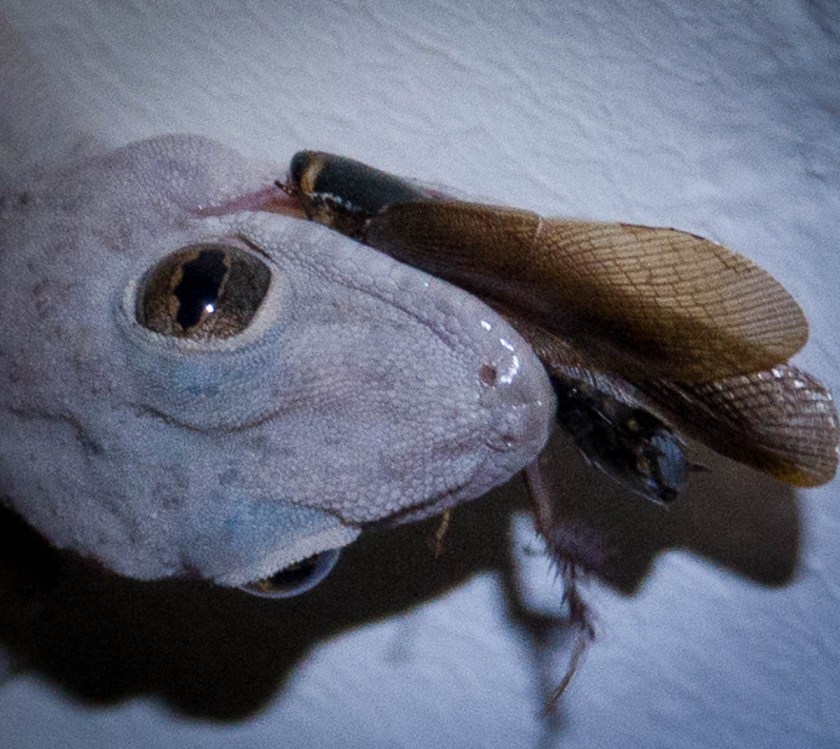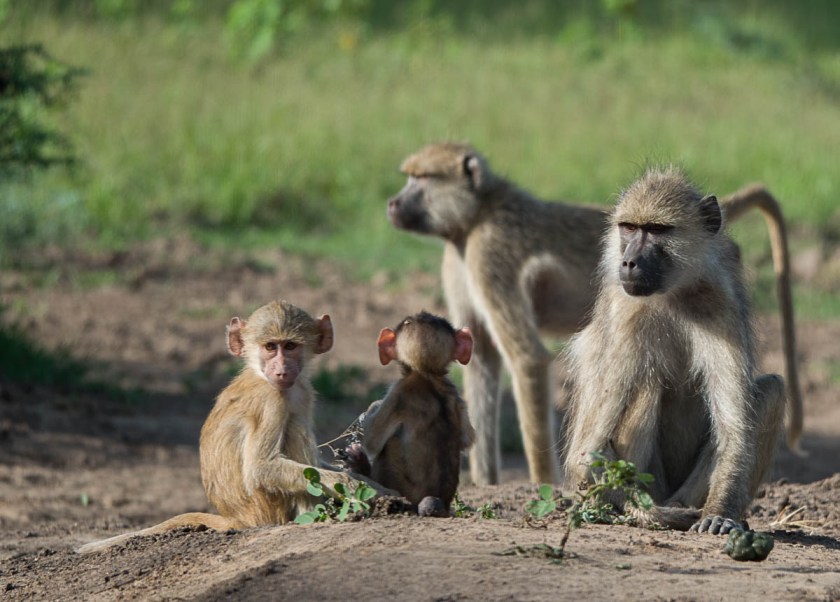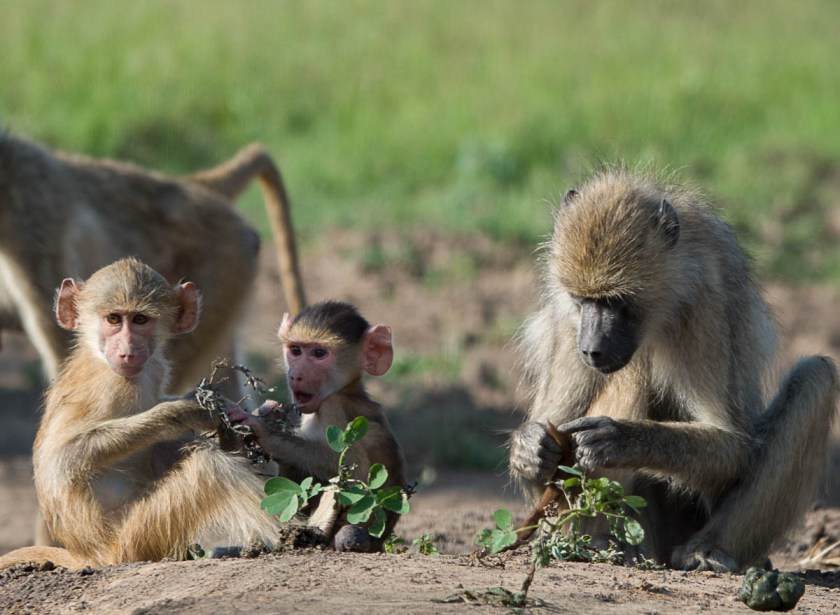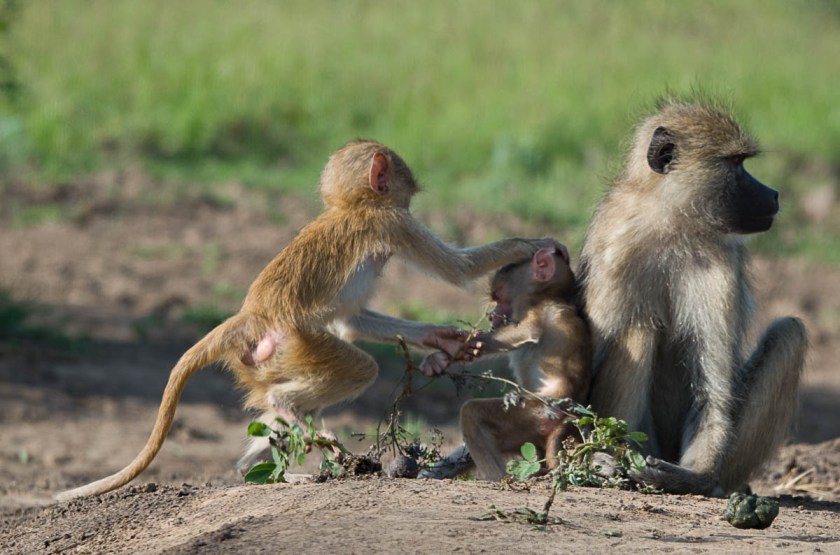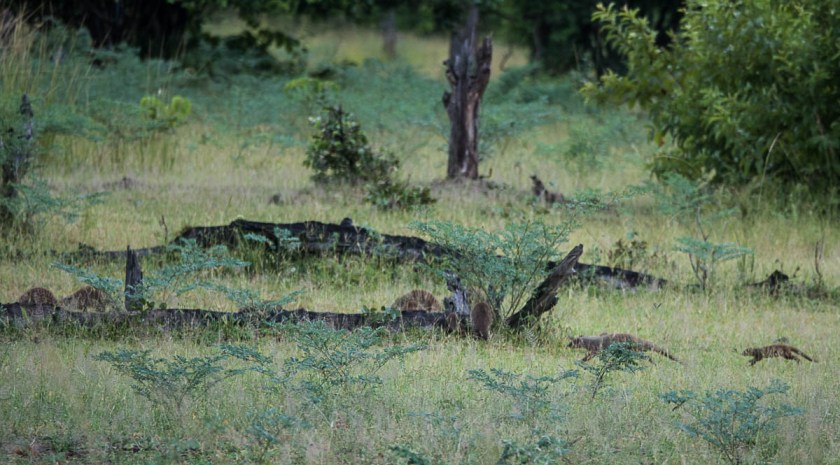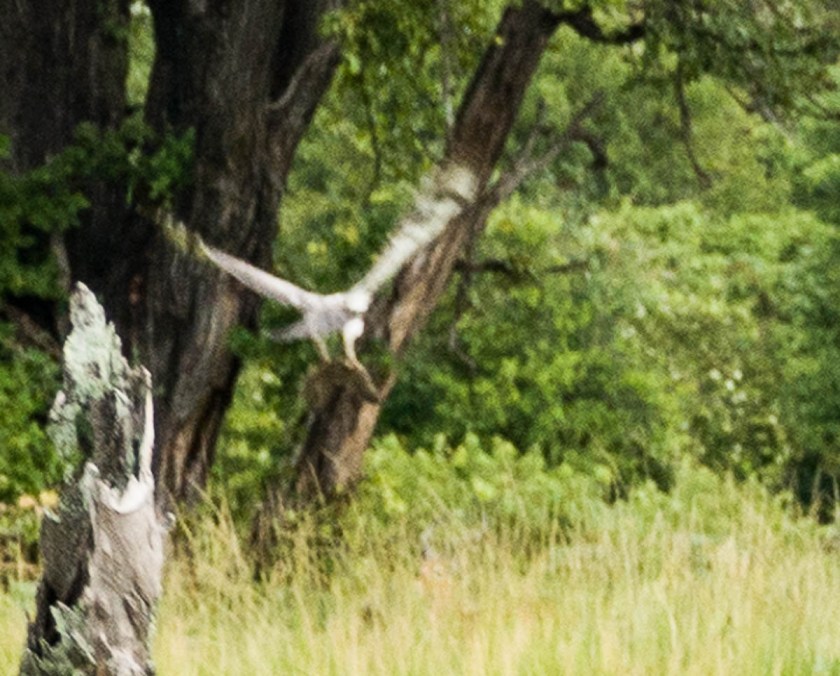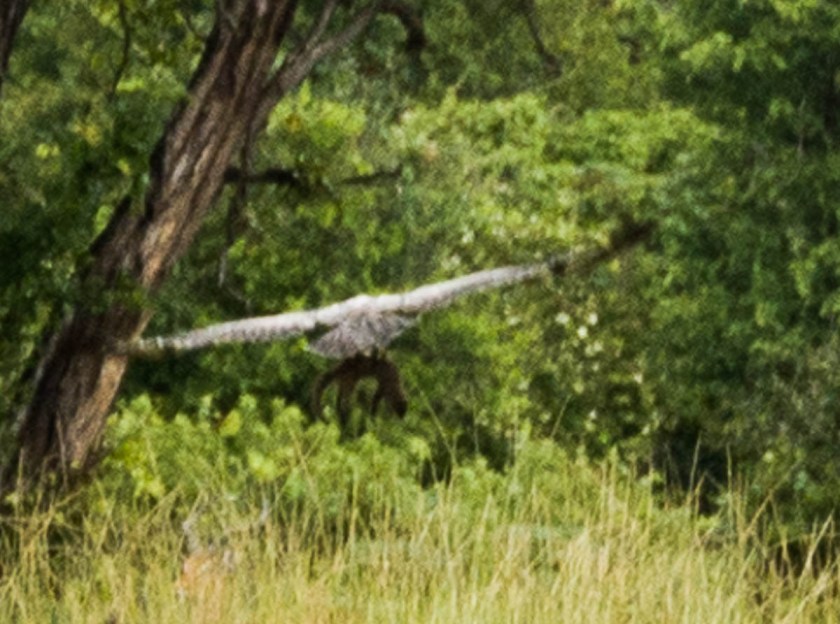One morning after a night of heavy rain we found this mass of foam hanging over the muddy track.
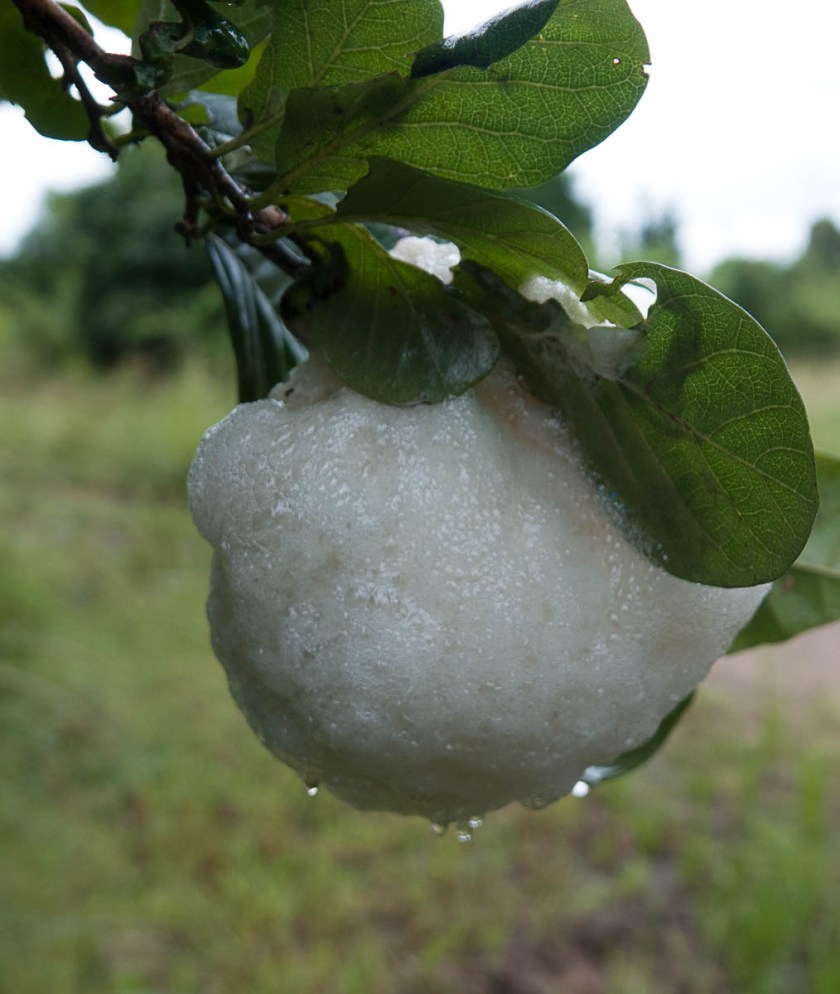
About the size of a large grapefruit, it turned out to be the nest of the terrestrial African Foam Nest Tree Frog, Chiromantis xerampelina. Its construction is the culmination of a Bacchanalian orgy.
The female secrets a mucus from her cloaca, together with water from her bladder, and then she and an entourage of males whip this into a foam by churning it with their hind legs. Into this she lays her legs, and the males fertilize them, adding sperm to the mix. There can be up to 12 males, and the whole thing takes a long time, so the female takes breaks in the middle to rest and hydrate.
They build these astonishing nests above muddy puddles, and when the tadpoles hatch they drop into the puddle, where they stay until they grow into frogs. If the puddle dries out too soon, “Tough luck” as one of my guides said.
If you are still reading, you might also be interested to know how these tiny tree frogs survive the intense sun and heat of the long hot dry season. They have unusual skin that resists water loss, but their ventral skin lacks this property, so they curl up, with all the vulnerable parts tucked underneath them, and secrete a special mucus to seal any remaining gaps. There they stay, motionless, drop their breathing rate, and aestivate.
PS: According to Byrne and Whiting (2008) “Offspring of .. polyandrous encounters are more likely to survive than the eggs fertilised by a single male.” So much for monogamy.


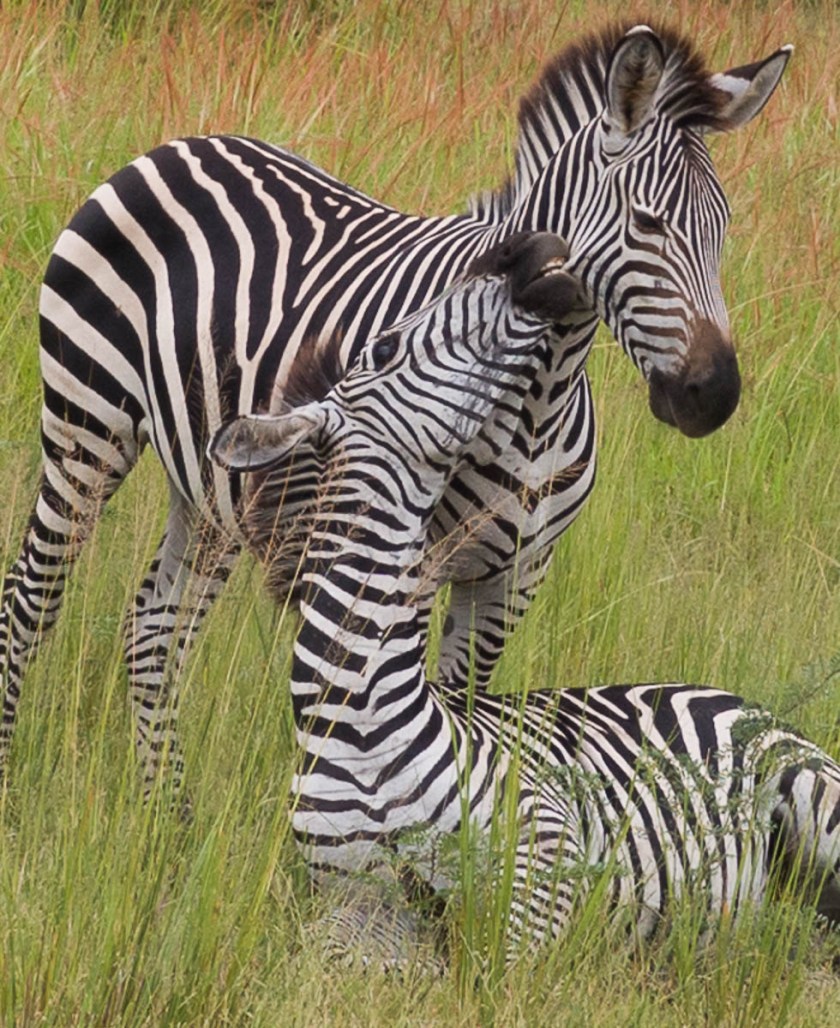


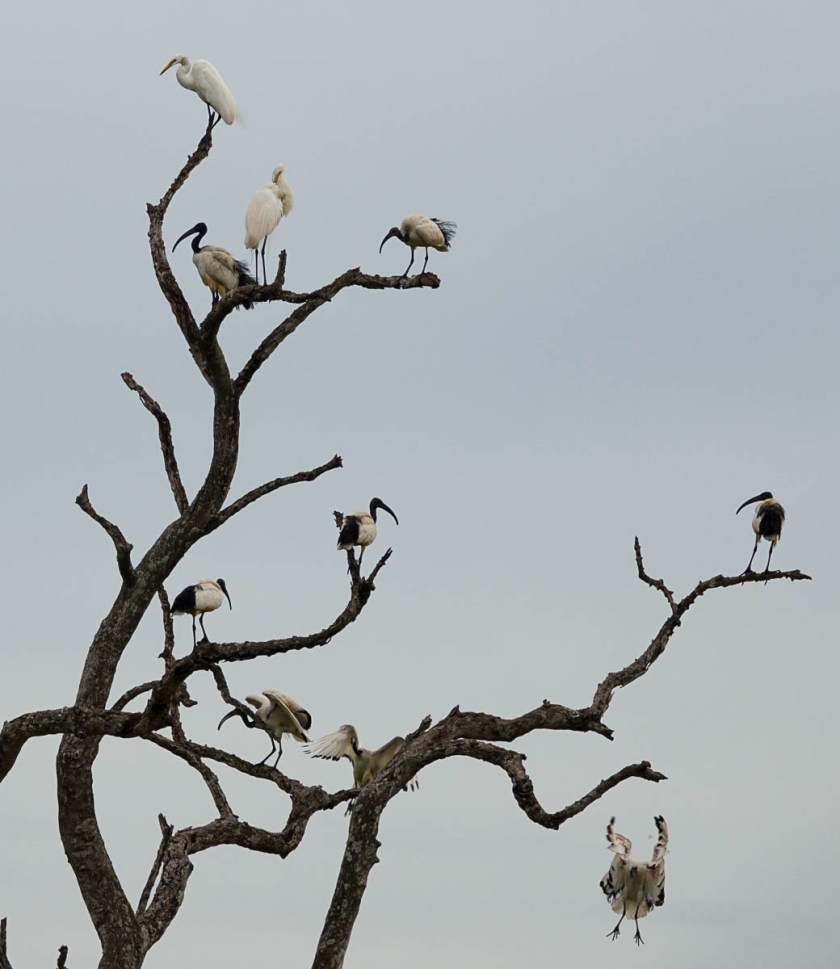





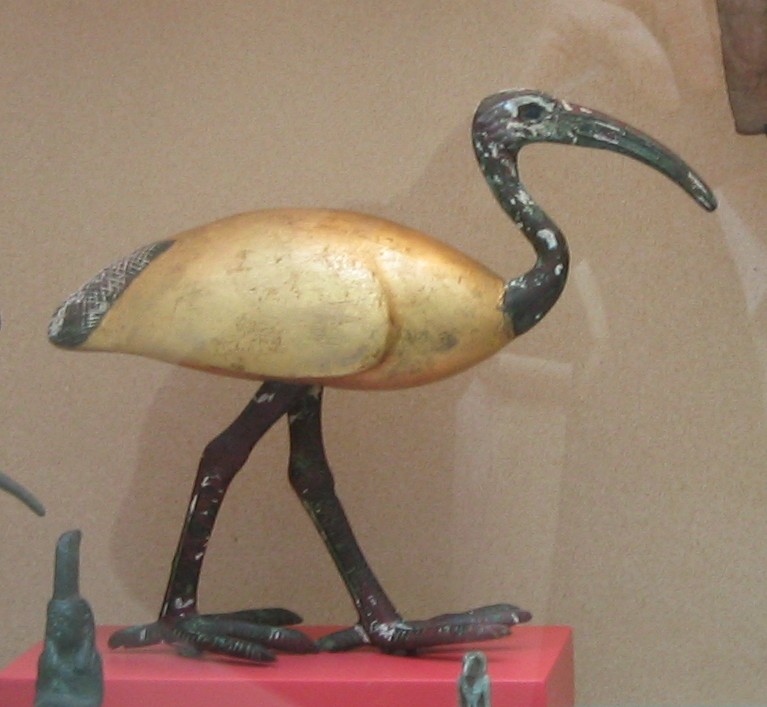



















 The wear and tear suggests that not only the pads come into contact with the ground or tree, but sometimes the whole tarsus. I have found photos of leopards descending trees head first, which they often do, and it does indeed sometimes look like the whole tarsus touches the trunk. I’ve also wondered whether they make extensive contact when they push off in one of their powerful leaps (up to 20 feet forwards, or 10 feet upwards). If anyone can shed light on this, I’d be interested.
The wear and tear suggests that not only the pads come into contact with the ground or tree, but sometimes the whole tarsus. I have found photos of leopards descending trees head first, which they often do, and it does indeed sometimes look like the whole tarsus touches the trunk. I’ve also wondered whether they make extensive contact when they push off in one of their powerful leaps (up to 20 feet forwards, or 10 feet upwards). If anyone can shed light on this, I’d be interested.

